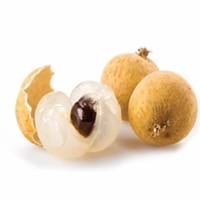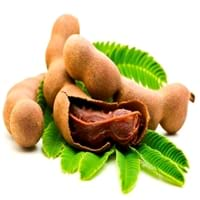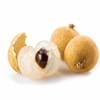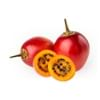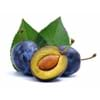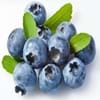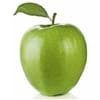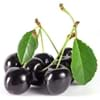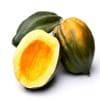Health Benefits
Anti depressant, Anti-inflammatory properties, Healthy mucus membrane, prevents oral cavity cancer, Prevents anemia, Prevents cases of morning sickness, Prevents lung cancer, Skin rejuvenation, Treatment of colonic diseases
Boosts immune system, Boosts respiratory health, Cancer prevention, Digestive aid, Piles treatment
General Benefits
Anti oxidant properties, Anti-inflammatory properties, Digestive aid, Gives you energy, Suppresses Arthritis
Beneficial in improving nerve function, Protects against parasites and worms, Relieves pain
Skin Benefits
Reduces wrinkles, Skin rejuvenation
Anti-aging benefits, Brightens and lightens complexion, Exfoliates skin, Hydrates skin, Treatment of dark spots
Hair Benefits
Not Available
Prevents hair loss
Allergy Symptoms
Itching, Swelling of mouth, tongue or lips, Tingling sensation in mouth
Abdominal pains, Breathing difficulty, Dizziness, Eczema, Fainting, Hives, Itching, Nasal congestion, Swelling of face, Tingling sensation in mouth, Vomiting
Side Effects
Mouth irritation, Weight gain
Decrease in blood sugar levels, Induces acid reflux, Allergic reaction, Tooth decay, May form gallstones
Best Time to Eat
As a snack in the late afternoon
Along with meal, As a snack in the late afternoon, Don't consume at night and before bed, Strictly avoid empty stomach
Vitamin B5 (Pantothenic Acid)
Vitamin C (Ascorbic Acid)
Vitamin E (Tocopherole)
Not Available
Vitamin K (Phyllochinone)
Not Available
Lutein+Zeaxanthin
Not Available
Phytosterol
Not Available
Calories in Fresh Fruit with Peel
Not Available
Calories in Fresh Fruit without Peel
Not Available
Calories in Frozen Form
Not Available
Calories in Dried Form
Not Available
Calories in Canned Form
Not Available
Not Available
Calories in Jam
Not Available
Type
Tree fruit, Tropical
Tropical
Season
Mid to late summer
Spring, Summer
Varieties
Chompoo Longan, Kohala Seedling, Haew, Edau and Biew Kiew
PKM 1, Urigam, Hasanur, Tumkur prathisthan, DTS 1 and Yogeshwari
Seedless Variety
Not Available
No
Color
Rusty brown
Brown, Reddish-brown
Inside Color
Yellowish brown
Brown
Shape
Round
Curving Cylinder
Taste
Sweetish
Sour-Sweet
Soil Type
Well-drained
Loam, Sandy, Sandy loam, Well-drained
Climatic Conditions
Sunny, Warm, Without frosts
Humid to dry, Rainfall, Warm to hot climate
Facts about
- Longan is also called as "Dragon's eye" in China as it gives an impression of an eyeball.
- Longan seeds can be used to absorb the venom after the snake bite and they also help to stop bleeding.
- Tamarind is used to prevent body odor.
- African children use the tamarind seeds in games.
- No cases of tamarind toxicity or allergy reported till date.
Top Producer
Thailand
India
Other Countries
Australia, Combodia, Taiwan, United States of America, Vietnam
Africa, Australia, Brazil, China, Mexico, Nigeria, Sudan, Taiwan
Top Importer
China
United States of America
Top Exporter
Thailand
Thailand
Botanical Name
Dimocarpus longan
Tamarindus indica
Synonym
Dragon eye
Tamarindo, tamarindus
Subkingdom
Viridiplantae
Tracheobionta
Division
Tracheophyta
Magnoliophyta
Class
Magnoliopsida
Liliopsida
Family
Sapindaceae
Fabaceae
Genus
Dimocarpus
Tamarindus
Species
D. longan
Tamarindus indica
Generic Group
Not Available
Tamarind Sub
Difference Between Longan and Tamarind
We might think that Longan and Tamarind are similar with respect to nutritional value and health benefits. But the nutrient content of both fruits is different. Longan and Tamarind Facts such as their taste, shape, color, and size are also distinct. The difference between Longan and Tamarind is explained here.
The amount of calories in 100 gm of fresh Longan and Tamarind with peel is 83.00 kcal and Not Available and the amount of calories without peel is Not Available and 239.00 kcal respectively. Thus, Longan and Tamarind belong to Low Calorie Fruits and High Calorie Fruits category.These fruits might or might not differ with respect to their scientific classification. The order of Longan and Tamarind is Sapindales and Fabales respectively. Longan belongs to Sapindaceae family and Tamarind belongs to Fabaceae family. Longan belongs to Dimocarpus genus of D. longan species and Tamarind belongs to Tamarindus genus of Tamarindus indica species. Beings plants, both fruits belong to Plantae Kingdom.
